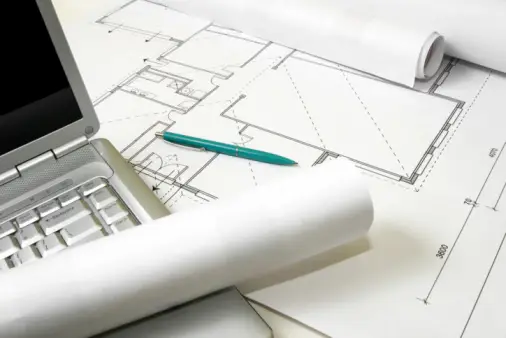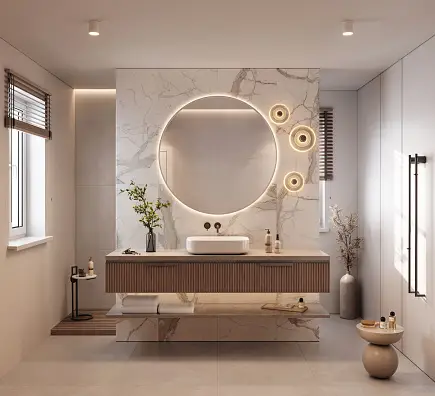
Blueprints Unleashed: Premium wide-format paper Selections for Designers
Precision is paramount in design and architecture. Every line and detail is significant in bringing a vision to life. For professionals in design and architecture, selecting a wide format goes beyond printing; it’s about translating concepts into tangible representations that capture every nuance and dimension. With meticulous attention to detail, these printing solutions ensure that the integrity of each design element is preserved, enabling the seamless realization of creative visions. This exploration delves into premium paper selections, like plotter paper, for individuals who meticulously craft the blueprints of tomorrow’s structures.
Understanding the Importance
Plotter paper’s significance extends beyond mere printing; it’s about conveying ideas with clarity and accuracy. Architects, engineers, and designers rely on its sturdy composition, high opacity, and smooth coating for precise reproduction. Premium papers withstand environmental factors, ensuring designs remain pristine over time. Its compatibility with various ink types allows for versatile usage, while its durability guarantees longevity. Selecting the right paper is essential for architectural drafting, engineering schematics, graphic design, or fine art reproduction. In the hands of design professionals, it becomes more than just a medium—it’s the cornerstone of creativity and precision.
Quality Matters: Features of Premium wide-format paper
- Weight and Thickness: Premium options are characterised by substantial weight and thickness, which ensures sturdiness and tear resistance during plotting. This resilience guarantees durability under rigorous conditions, preserving the integrity of intricate designs throughout the printing process.
- Opacity: Opacity is critical in paper selection, particularly for double-sided printing scenarios. Its significance lies in preventing ink bleed-through, thus maintaining the clarity and legibility of designs. When considering opacity, opting for high levels ensures that intricate details and fine lines are faithfully reproduced without compromising the integrity of the printed material. This attribute is particularly vital in professional settings where precision and presentation are paramount. By prioritising opacity, designers can ensure that their printed designs maintain their intended quality and readability, whether viewed from one side or both.
- Coating: Coated paper enhances print quality by facilitating ink deposition on a smooth surface. This results in sharper lines, vibrant colours, and precise rendering of intricate details, elevating designs’ visual impact. The coating also helps prevent ink bleed, ensuring that colours remain vivid and defined. This feature is particularly beneficial for intricate graphics and detailed illustrations, where every line and shade contributes to the overall composition’s integrity and clarity.
- Durability: Engineered for durability, premium selections exhibit resilience against environmental elements like light, heat, and moisture. This robust construction guarantees that designs maintain pristine condition and legibility over extended periods. By withstanding the rigours of various conditions, these papers assure longevity and reliability, preserving the integrity of architectural blueprints, engineering schematics, and artistic creations for years to come.
- Compatibility: Premium papers are compatible with various ink types, including dye-based and pigment-based inks. This versatility allows designers to choose the ink that best suits their requirements without compromising print quality.
Selecting the Right Paper for Your Needs
- Architectural Drafting: Architects demand that the intricate details of building plans and elevations be accurately reproduced. Consider heavyweight, coated with high opacity for architectural drafting to ensure that designs are faithfully rendered with precision and clarity.
- Engineering Schematics: Engineers rely on paper to convey the precise dimensions and specifications of engineering schematics. Opt for durable paper with a matte coating to minimise glare and ensure that technical drawings are readable under various lighting conditions.
- Graphic Design: Graphic designers require that faithfully reproduce vibrant colours and intricate patterns. Choose a coated plotter paper with excellent colour saturation and smooth surface texture to achieve professional-quality prints that showcase the full spectrum of design creativity.
- Fine Art Reproduction: For artists seeking to reproduce their artwork with precision and fidelity, selecting the right paper is essential. Look for a heavyweight, archival-grade plotter paper with a matte finish to capture the subtle nuances of the original artwork while ensuring long-lasting durability and fade resistance.
Conclusion
In design and architecture, where each line narrates a story, and every detail holds significance, premium wide-format paper emerges as the essential conduit. Its role in conveying these narratives with utmost clarity and precision cannot be overstated. Designers, architects, and engineers rely on the distinctive features and considerations of the selections to enhance their craft. From weight and thickness to opacity and coating, these attributes ensure that visions are translated faithfully onto the canvas of wide-format paper. With meticulous attention to detail and an understanding of the nuanced requirements of their respective disciplines, professionals harness the power to breathe life into their creations. Through this synergy between creativity and quality, designs transcend mere blueprints, evolving into timeless expressions of ingenuity and excellence.





